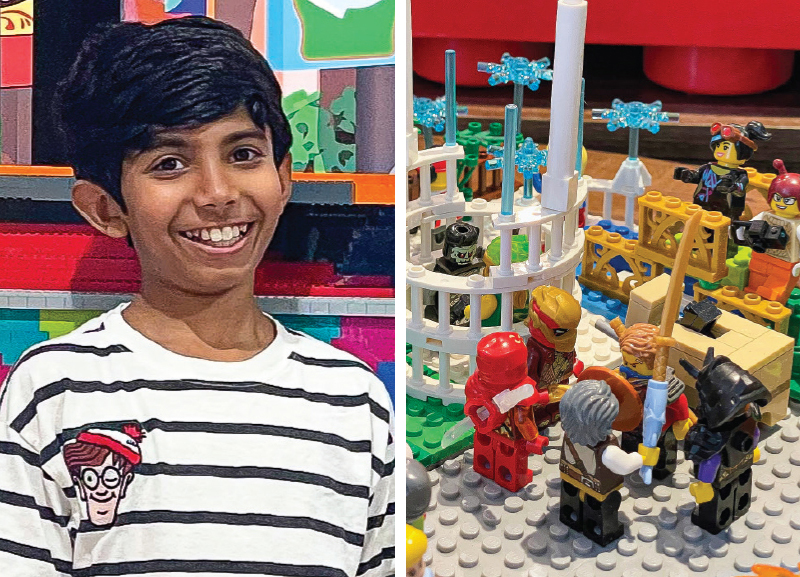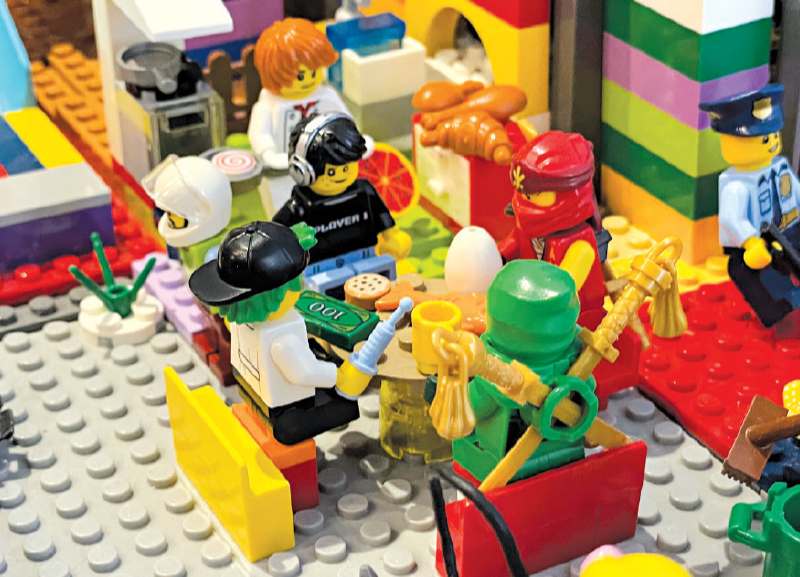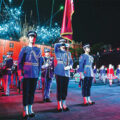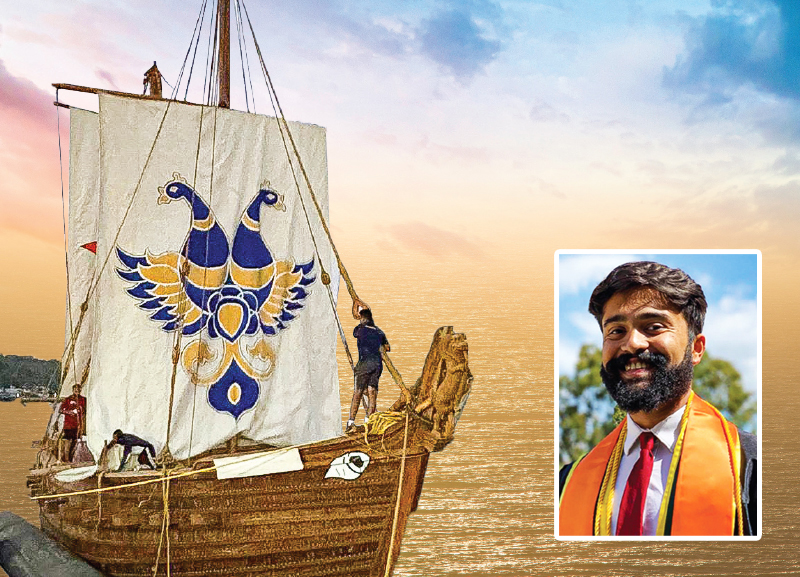
July 16, 2025
What drew you to take on this project?
This project is a living testament to India’s shipbuilding legacy. It was especially interesting because of its historic significance—the ship was inspired by the painting of a ship in the Ajanta Caves in Maharashtra. All we had was a visual reference of a mural from the rock-cut Ajanta Caves that depicts a ship from the 5th century CE with a high stem and stern and square sails attached to three masts. After creating some initial models, we finalised the ship’s design and carefully selected materials. The ship was rigged up with natural fibre rope. It was caulked using fish oil, tree sap, coir plugs and chalk powder. Different woods were used for different parts— the keel was made of Indian laurel, planking from wild jack, the frames from regular jackfruit wood and the stem, stern, beams, mast and oars from teak.
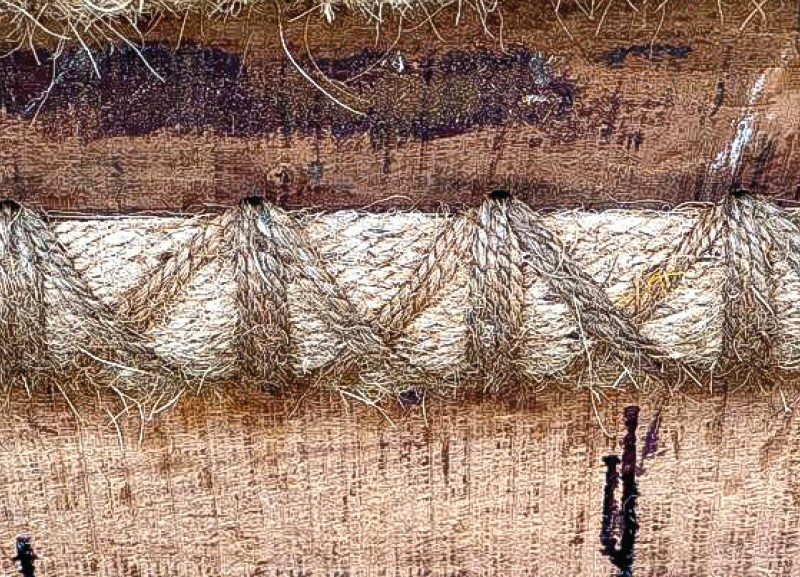
Construction began with setting the keel and placing temporary frames to guide the hull’s shape. To achieve the right curves, we steamed the wooden planks for two to three hours in a steam box and bent them in the desired shape. The planks were stitched to each other and to the keel using an ‘IXIXI’ pattern. This was done using coconut fibre stitching, traditional wooden joinery and natural resins, methods historically used in ancient Indian maritime construction. Once the hull was complete, we added internal framing, beams, the deck, masts and sails. Our ship, which was constructed at Divar, measures 20 metres and has two masts.
What was the most exciting or challenging part of this project?
The novelty of the project made it truly exciting. I had to set aside modern techniques and learn the old ways as we went along—reading, experimenting and working closely with traditional artisans. Communicating with them, understanding how to design and execute certain elements and sourcing the right kind of wood and raw materials were challenging. But after two years of work, seeing the ship in the water with its sails up made it all worthwhile.
What was unique about this initiative?
Preserving a vanishing craft was at the heart of this initiative. This project brought together expert artisans from across India, including a skilled team led by master craftsman Babu Shankaran from Kerala. These artisans had learnt the craft from previous generations and are likely among the last to still practise it. This project was backed by Shri Sanjeev Sanyal’s vision. He is a member of the Prime Minister’s Economic Advisory Council and author of ‘The Ocean of Churn’ and ‘Land of the Seven Rivers’. The initiative focussed on protecting this traditional technique by building the ship and documenting the process.
Will there be more such ships built by your company?
As of now, this is a one-of-a-kind project. Whether future projects emerge depends on future developments.
While Hodi Innovations revives ancient craftsmanship, a young creator in Gurugram has built a Lego smart city with a focus on a healthy, sustainable future. Though these creations are worlds apart, both are fuelled by creativity and purpose.
Zaraan Ratan Kishore, a class 5 student at Lancers International School, Gurugram, has created a Lego city designed to connect people and promote sustainable living. Inspired by the Sustainable Development Goals (SDGs) taught at his school, Zaraan used his imagination to design a city where Lego mini-figures engage in outdoor activities. His model includes a library, rock-climbing wall, paragliding setup, swimming pool and green spaces—envisioning a world where physical activity takes precedence over screens.
His city features limited vehicles, encouraging walking and reducing pollution. Zaraan hopes his Lego model inspires others to stay active and adopt sustainable habits in everyday life.
